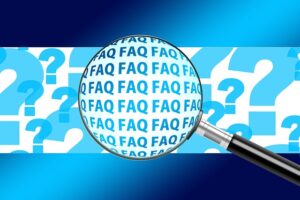Google's FAQ Rich Results offer businesses a strategic chance to boost online visibility and user engagement through structured data like JSON-LD (Schema FAQPage Type). By providing clear question text, answer summaries, and URL entities, websites can display FAQs as rich snippets on search engine results pages (SERPs), increasing click-through rates. Implementing this schema improves website accessibility, usability, and SEO, leading to better rankings in Google's rich FAQ results. To optimize, structure FAQs logically, use an accordion format, and regularly update content based on performance data from tools like Google Search Console, enhancing user experience and search engine visibility.
Adding the FAQPage schema to your website’s content is a powerful strategy to boost user engagement and enhance your search engine visibility. With Google’s FAQ rich results, you can present frequently asked questions in a visually appealing, interactive format, increasing click-through rates and improving user experience. This article guides you through the process, from understanding the benefits of rich results to measuring success, ensuring your website stands out in the crowded digital landscape.
- Understanding Google FAQ Rich Results
- Benefits of Implementing FAQPage Schema
- Identifying Essential FAQ Questions
- Structuring Your FAQ Content for Schema Markup
- Optimizing for User Engagement and SERP Visibility
- Measuring Success and Continuous Improvement
Understanding Google FAQ Rich Results

Google’s FAQ Rich Results are a powerful way for businesses and websites to enhance their search engine visibility and user experience. By implementing the Schema FAQPage Type, sites can provide Google with structured data that highlights frequently asked questions and answers, allowing for rich snippets in search results. These snippets display directly within the SERP, offering users concise, valuable information without them having to click through to the website.
To add the FAQ schema and optimize for these rich snippets, developers and content creators can follow a straightforward process. Incorporating relevant questions and their corresponding answers into structured data formats, such as JSON-LD, enables search engines to understand and display the content effectively. With proper FAQ Snippet Optimization, including important details like question text, answer summaries, and URL entities, websites can capture more real estate on the SERP, driving higher click-through rates and improved user engagement.
Benefits of Implementing FAQPage Schema

Implementing the FAQPage schema is a strategic move for any website aiming to enhance its search engine visibility and user experience. By adopting this schema, websites can unlock several advantages, particularly when it comes to Google’s rich FAQ results. One of the primary benefits is increased accessibility and usability; it allows users to quickly scan through frequently asked questions and find relevant answers without scrolling through lengthy pages. This is especially valuable for complex topics or services where users seek quick, concise information.
Moreover, the FAQPage schema encourages FAQ Snippet Optimization, enabling search engines to display key question-answer pairs in a structured, appealing format. This not only grabs users’ attention but also improves click-through rates from search engine results pages (SERPs). Additionally, with the use of Accordion Schema SEO, websites can efficiently organize and present related questions, fostering deeper engagement and providing a more satisfying user experience, ultimately leading to better rankings in Google’s rich FAQ results.
Identifying Essential FAQ Questions

Identifying Essential FAQ Questions is a crucial step in enhancing user experience and optimizing your content for Google’s FAQ Rich Results. When crafting these frequently asked questions, consider what queries your target audience might have about your products or services. Think from their perspective and address the most pressing issues they may face. For instance, for an e-commerce site, common questions could include shipping policies, return procedures, or product specifications.
For maximum impact, focus on creating a set of FAQ questions that cover various aspects of your business. This ensures comprehensive information is available to users who interact with your content, leading to improved user engagement and potentially higher click-through rates from search engine results pages (SERPs). By implementing the Schema FAQPage Type and optimizing your FAQ Snippet, you can leverage Rich FAQ Results to capture more real estate on SERPs and drive better conversions.
Structuring Your FAQ Content for Schema Markup

To structure your FAQ content for schema markup and unlock Google’s rich FAQ results, begin by organizing questions in a clear and logical manner. Each question should be concise and directly address a specific user query. The corresponding answers should provide valuable, detailed information that satisfies the user’s intent. This structured approach not only aids search engines in understanding your content but also enhances user experience.
Utilize an accordion schema SEO format to present your FAQs. This involves grouping related questions together under expandable sections, allowing users to navigate through them easily. By following this structure and incorporating how to add FAQ schema correctly, you’ll make it easier for both Google and your audience to engage with your content. Aim for a clean, user-friendly layout that encourages interaction and exploration of your frequently asked questions.
Optimizing for User Engagement and SERP Visibility

Implementing the FAQPage schema is a powerful strategy to optimize content for both user engagement and search engine visibility, especially when aiming for Google’s Rich FAQ Results. By utilizing this structured data format, websites can present frequently asked questions and their answers in a visually appealing and interactive manner, enhancing user experience and encouraging deeper engagement.
This approach not only improves the look and feel of question-and-answer sections but also increases the likelihood of being featured in rich snippet results on search engines like Google. With Accordion Schema SEO, content creators can ensure that their FAQ pages are optimized for relevant keywords, making it easier for potential customers to find answers to their queries. This visibility is crucial for capturing user attention and driving click-through rates, ultimately improving a website’s position in SERPs (Search Engine Results Pages).
Measuring Success and Continuous Improvement

Measuring success is a crucial step in optimizing your content for Google’s Rich FAQ Results. By utilizing tools like Google Search Console and analytics platforms, you can track key performance indicators (KPIs) such as click-through rates (CTRs), average position, and impressions for your FAQ schema markup. These insights allow you to understand the impact of your implementation and identify areas for improvement. For instance, if a particular FAQ snippet isn’t performing well, you can analyze the content, structure, and relevance to make necessary adjustments.
Continuous improvement is key in maintaining and enhancing your search engine visibility. Regularly reviewing and updating your FAQPage schema ensures that your content stays current and aligns with user queries. By implementing a feedback loop where data-driven decisions guide modifications, you can optimize your FAQ Snippet Optimization strategies over time. This iterative process helps maximize the potential of Rich FAQ Results, ensuring your website provides valuable answers to users’ questions efficiently.
